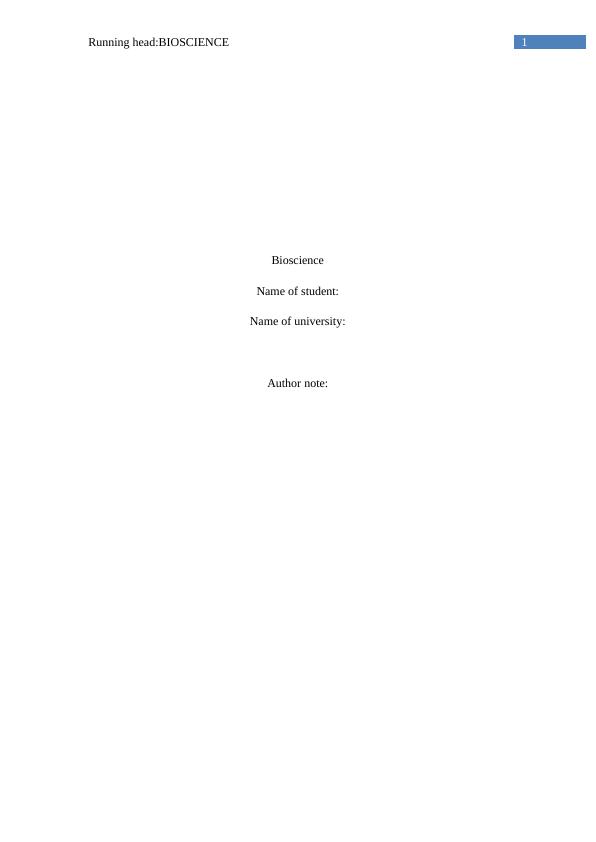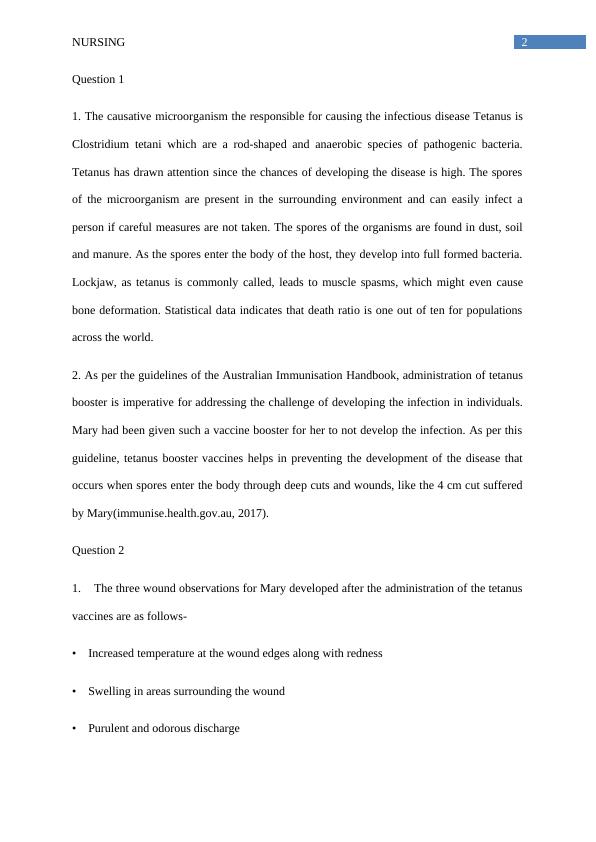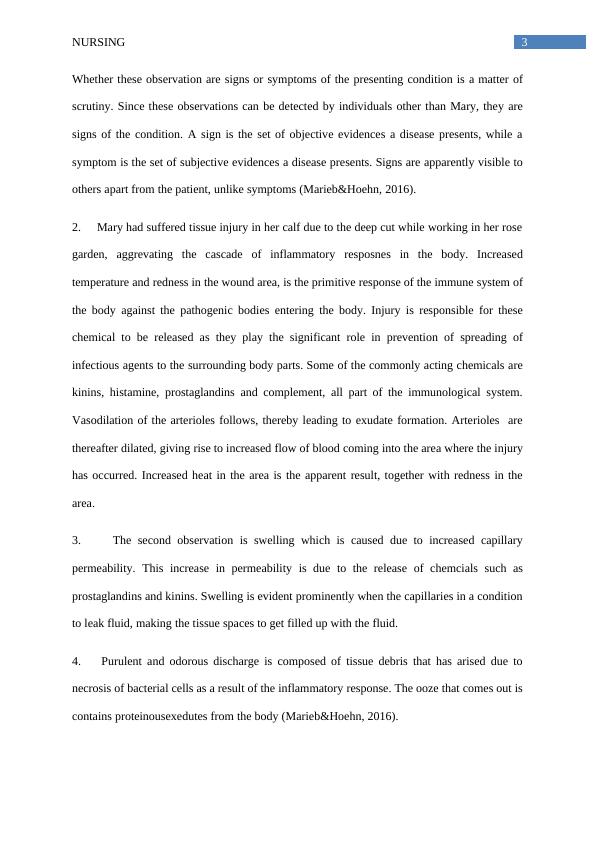Ask a question from expert
NURSING BIOSCIENCE Assignment
7 Pages1557 Words174 Views
Added on 2019-11-08
NURSING BIOSCIENCE Assignment
Added on 2019-11-08
BookmarkShareRelated Documents
1Running head:BIOSCIENCEBioscienceName of student:Name of university:Author note:

2NURSINGQuestion 11. The causative microorganism the responsible for causing the infectious disease Tetanus isClostridium tetani which are a rod-shaped and anaerobic species of pathogenic bacteria.Tetanus has drawn attention since the chances of developing the disease is high. The sporesof the microorganism are present in the surrounding environment and can easily infect aperson if careful measures are not taken. The spores of the organisms are found in dust, soiland manure. As the spores enter the body of the host, they develop into full formed bacteria.Lockjaw, as tetanus is commonly called, leads to muscle spasms, which might even causebone deformation. Statistical data indicates that death ratio is one out of ten for populationsacross the world. 2. As per the guidelines of the Australian Immunisation Handbook, administration of tetanusbooster is imperative for addressing the challenge of developing the infection in individuals.Mary had been given such a vaccine booster for her to not develop the infection. As per thisguideline, tetanus booster vaccines helps in preventing the development of the disease thatoccurs when spores enter the body through deep cuts and wounds, like the 4 cm cut sufferedby Mary(immunise.health.gov.au, 2017). Question 21. The three wound observations for Mary developed after the administration of the tetanusvaccines are as follows- • Increased temperature at the wound edges along with redness • Swelling in areas surrounding the wound• Purulent and odorous discharge

3NURSINGWhether these observation are signs or symptoms of the presenting condition is a matter ofscrutiny. Since these observations can be detected by individuals other than Mary, they aresigns of the condition. A sign is the set of objective evidences a disease presents, while asymptom is the set of subjective evidences a disease presents. Signs are apparently visible toothers apart from the patient, unlike symptoms (Marieb&Hoehn, 2016). 2. Mary had suffered tissue injury in her calf due to the deep cut while working in her rosegarden, aggrevating the cascade of inflammatory resposnes in the body. Increasedtemperature and redness in the wound area, is the primitive response of the immune system ofthe body against the pathogenic bodies entering the body. Injury is responsible for thesechemical to be released as they play the significant role in prevention of spreading ofinfectious agents to the surrounding body parts. Some of the commonly acting chemicals arekinins, histamine, prostaglandins and complement, all part of the immunological system.Vasodilation of the arterioles follows, thereby leading to exudate formation. Arterioles arethereafter dilated, giving rise to increased flow of blood coming into the area where the injuryhas occurred. Increased heat in the area is the apparent result, together with redness in thearea. 3. The second observation is swelling which is caused due to increased capillarypermeability. This increase in permeability is due to the release of chemcials such asprostaglandins and kinins. Swelling is evident prominently when the capillaries in a conditionto leak fluid, making the tissue spaces to get filled up with the fluid. 4. Purulent and odorous discharge is composed of tissue debris that has arised due tonecrosis of bacterial cells as a result of the inflammatory response. The ooze that comes out iscontains proteinousexedutes from the body (Marieb&Hoehn, 2016).

End of preview
Want to access all the pages? Upload your documents or become a member.
Related Documents
Tetanus | Answer to Questionslg...
|6
|1573
|411
Organism and Tetanus Assignmentlg...
|5
|2139
|1131
Tetanus and Organism | Case Studylg...
|5
|1821
|419
Nursing Related Questions and Answerslg...
|8
|1683
|416
Bioscience Assignment Questions and Answerslg...
|9
|1823
|215
(PDF) Clostridium tetani as a pathogenic organismlg...
|5
|1814
|193